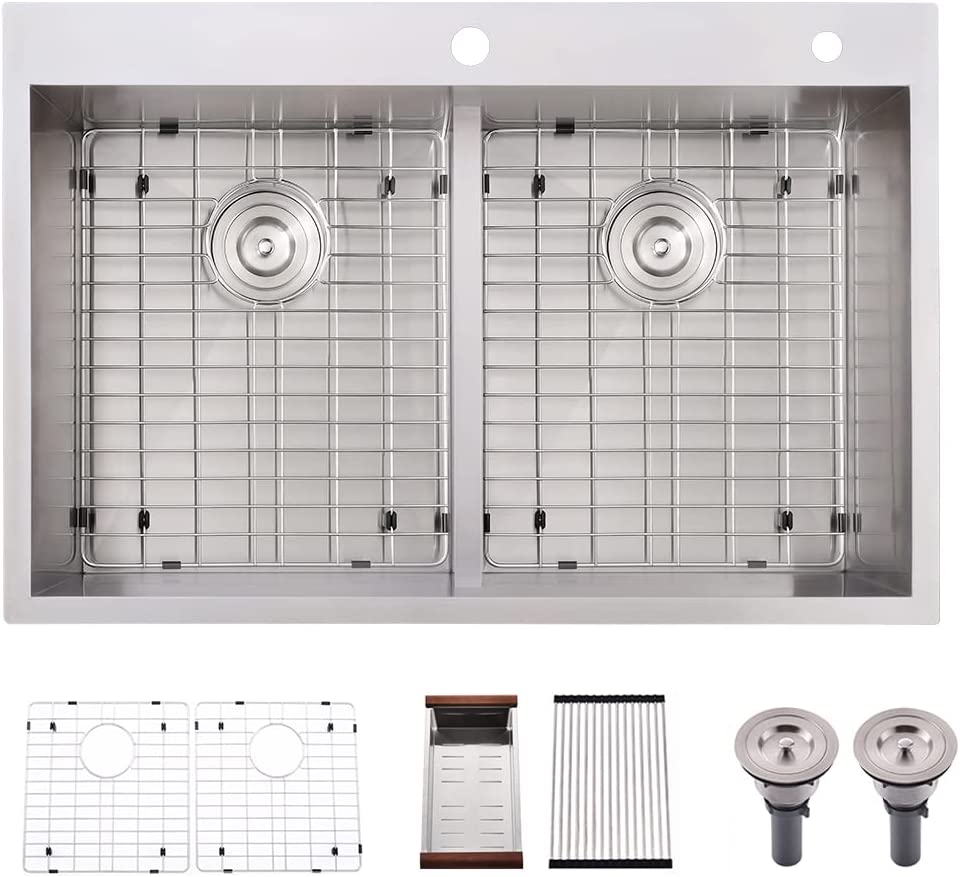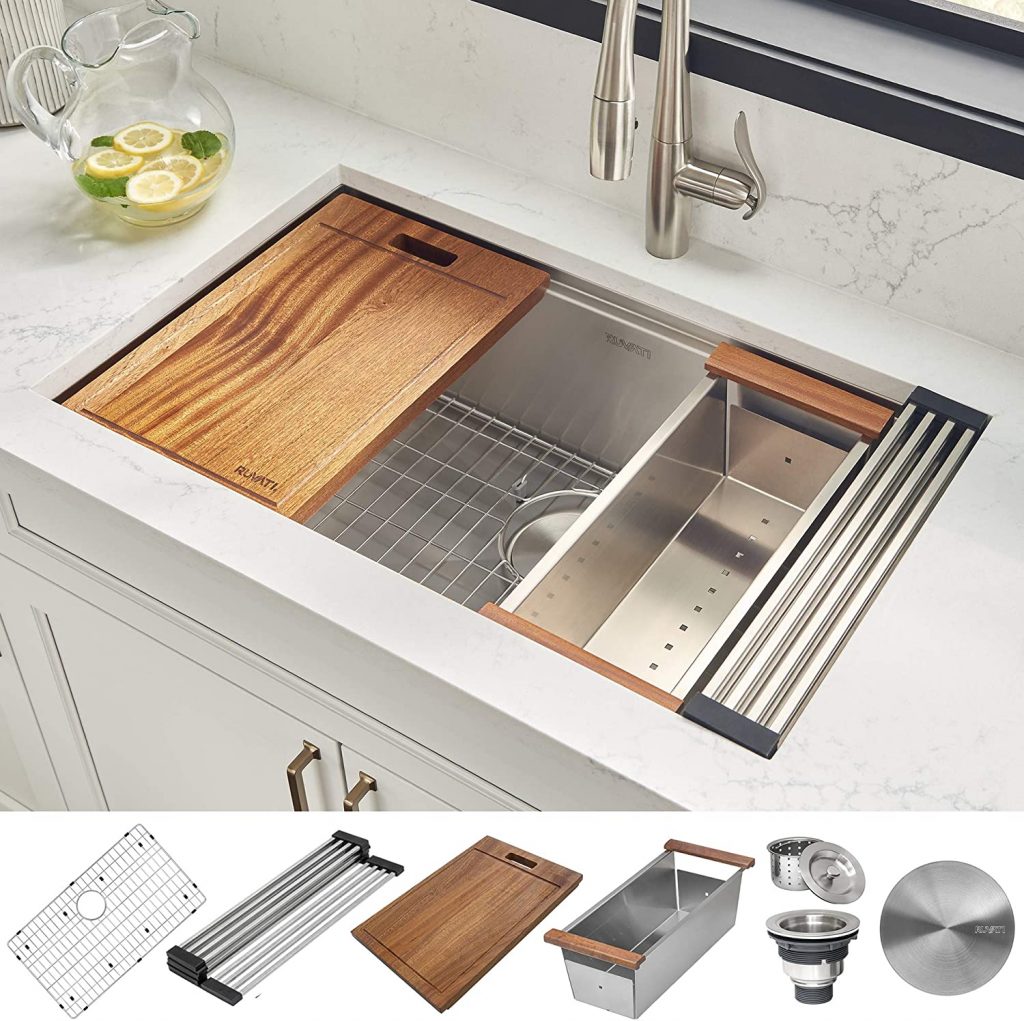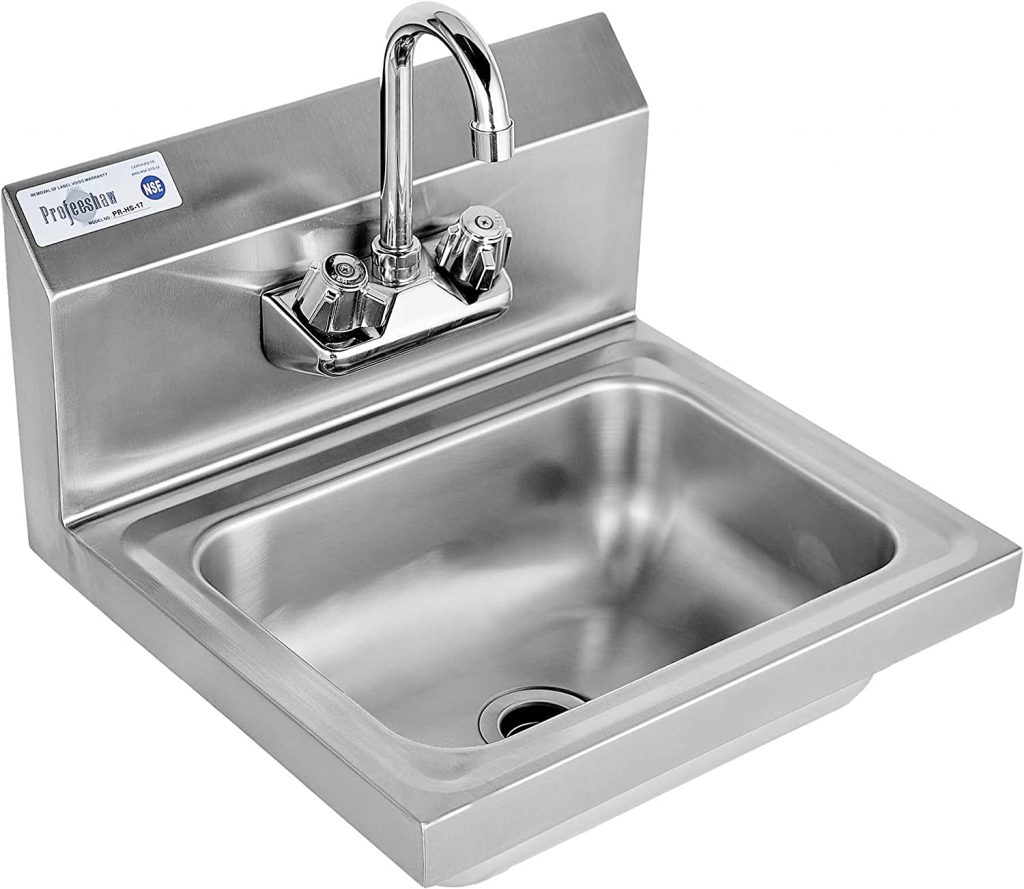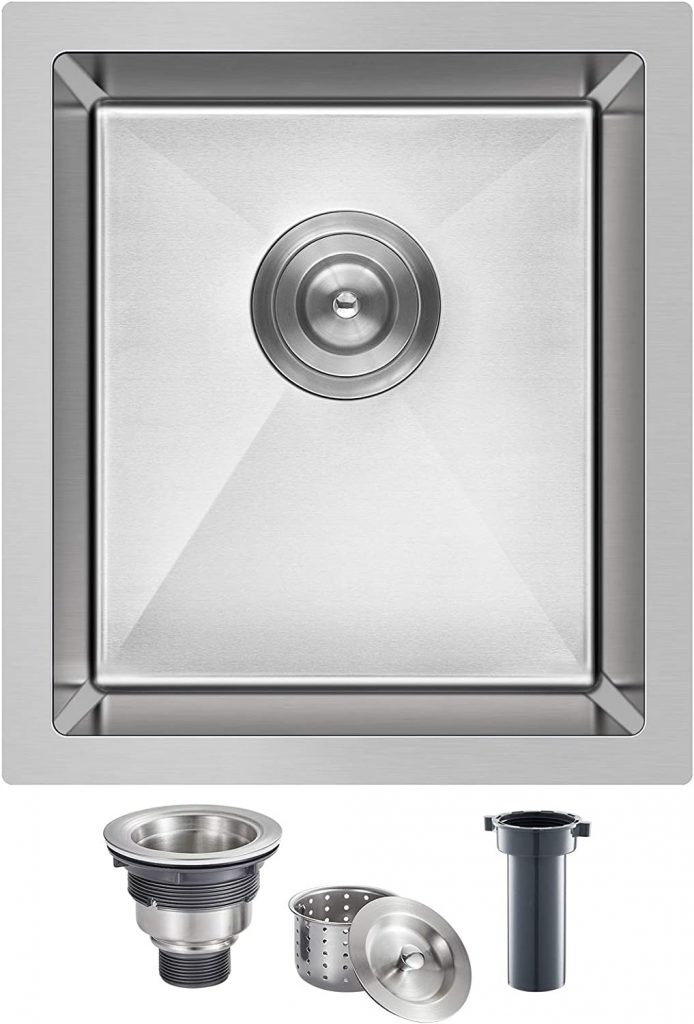The kitchen sink is one of the essential fixtures in any home. It is used for everything from washing dishes to preparing food, and as such, it needs to be both durable and functional. One of the many decisions you’ll have to make when designing or remodeling your kitchen is what kitchen sink size to choose.
The kitchen sink’s size should be based on your kitchen’s overall size and layout and how you plan to use the sink. If you’re unsure what size kitchen sink would be best for your home; this guide will provide an overview of kitchen sink sizes and tips on choosing one so that you can make an informed purchase decision!
What Is the Kitchen Sinks Standard Size?
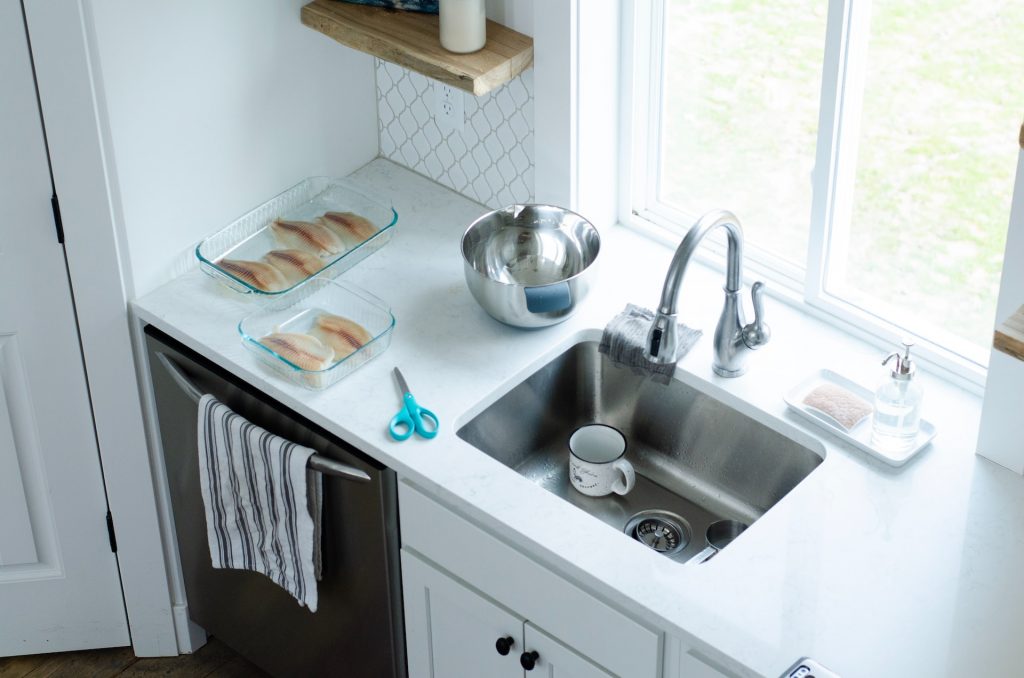
When it comes to the kitchen sink, size does matter. The sink is one of the most used fixtures in your home, so you’ll want to ensure it’s large enough to meet your needs but not so large that it dominates the space. The most common kitchen sinks sizes are between 30″ or 33,” and the kitchen sinks standard size can be 24″ or 36″. The average size of a kitchen sink is about 32 inches.
Conversely, if you have a large kitchen, you may want to choose a larger sink. Ultimately, the best way to determine the right size for your kitchen sink is to consult with a professional. They will be able to take into account the layout of your kitchen and help you select the perfect sink for your needs.
Factors to Consider When Choosing a Kitchen Sink Size
In addition to the overall size of your kitchen, there are several other factors you’ll need to consider when selecting a kitchen sinks size. These include:
➥The Number of People in Your Household
If you have a large family or often entertain, you’ll want a larger sink to wash big pots and pans easily. Conversely, if you live alone or have a small family, you may be able to get away with a smaller sink.
➥Consider How You Will Use Your Sink
Think about how you plan to use your sink on a daily basis. If you do a lot of cooking, you’ll want a large enough sink to accommodate big pots and pans. If you entertain often, you’ll need a large enough sink to wash serving platters and dinnerware. And if you have young children, you may want a lower-profile sink so they can reach the faucet easily.
➥The Amount of Counterspace You Have
The amount of counter space you have will play a role in determining the right size for your needs. You can choose a larger sink if you have a lot of counter space. It can be helpful if you do a lot of cooking or entertaining. On the other hand, if you have limited counter space, you’ll need to choose a smaller sink. In this case, ensuring that the sink is large enough to meet your needs is crucial. Otherwise, you may find yourself constantly running out of space.
➥Choose the Right Material for Your Sink
Another factor to consider when choosing a kitchen sink size is the sink’s material. Stainless steel sinks are a popular choice because they are durable and easy to maintain. However, they can also be noisy and show water spots more easily than other materials. Another popular option is cast iron, which is durable and has a beautiful finish.
However, it is essential to note that cast iron sinks are susceptible to chipping and scratching. A solid surface, a man-made material, mimics the look of stone. Solid surface sinks are non-porous, making them resistant to staining and easy to clean.
How Kitchen Sinks Are Being Measured
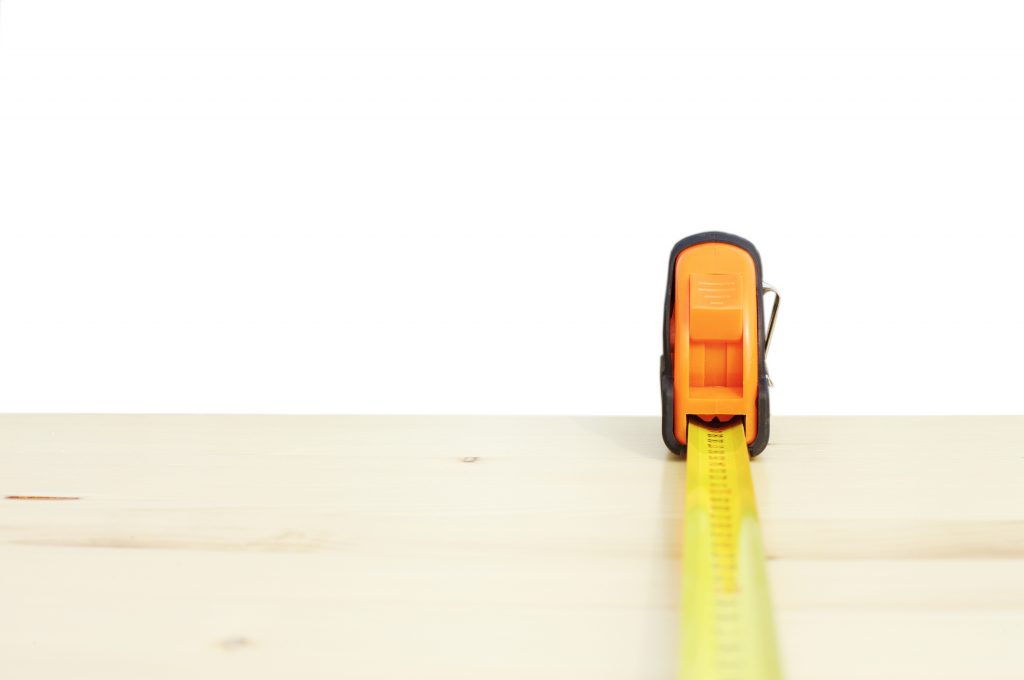
In order to measure the kitchen sink size that you need, you will need:
- Tape measure
- Piece of paper
- Pen or pencil
The most important measurement is the width, typically in inches. The width will determine how much counter space you have around the sink. The depth of the sink is also essential, as it will affect how much water the sink can hold and how easy it is to wash large items. Also, the height of the sink should be considered. You can use the height to determine how easy it is to reach the faucet and if the sink will be comfortable for you to use on a daily basis.
When measuring the width, start from one side of the sink and measure to the other. Make sure to write down this measurement so you can reference it later. The depth of the sink is measured from the front of the sink to the back. Again, be sure to write this measurement down. Then, measure the height of the sink from the top of the sink to the bottom. It will give you the overall height of the sink.
Once you have these measurements, you can start shopping for a kitchen sink that will fit your space. There are a variety of sizes available, so it’s essential to take your time and find one that’s just right for you.
Types of Kitchen Sinks on the Market
There are a few different types of kitchen sinks on the market, each with its own benefits and drawbacks. Here, we will look at the most popular options so that you can decide which type of sink is right for your home.
🍴Drop-in Kitchen Sinks
Drop-in kitchen sinks are one of the most popular styles on the market, and for a good reason. They are easy to install and can be used with any countertop material. Plus, they offer various benefits in terms of function and style. When it comes to function, drop-in sinks are very versatile. They can be used for food preparation and cleaning up after meals. And, because they are available in a wide range of sizes, you can find a sink that will fit your needs perfectly.
In terms of style, drop-in sinks come in various colors and designs. Whether you want a traditional stainless steel sink or something more modern, you’ll be able to find a drop-in sink that will complement your kitchen’s décor. However, one of the drawbacks of drop-in sinks is that they can be difficult to clean. Because they have a lip that rests on the countertop, food and dirt can collect in this area and be tough to reach.
🍴Undermount Kitchen Sinks
As the name suggests, undermount kitchen sinks are installed beneath the countertop, providing a sleek and seamless look. In addition to their stylish appearance, undermount kitchen sinks have several practical advantages. Because they are installed beneath the countertop, they are easy to clean and keep sanitary. They also provide more counter space, making prep meals and washing dishes easier. And because they are available in a variety of materials, including stainless steel and granite, undermount kitchen sinks can easily match any décor.
One of the main drawbacks of undermount kitchen sinks is that they can be difficult to install. If you are uncomfortable with plumbing, it’s best to hire a professional to install your sink. Additionally, undermount kitchen sinks are installed beneath the countertop, so they are not as easy to replace if they become damaged.
🍴Apron Front Kitchen Sinks
Apron front kitchen sinks, also known as farmhouse sinks, are enjoying a resurgence in popularity. These sinks were once a staple in country kitchens, but their simple design and functionality have made them popular in a wide range of kitchen styles. Apron front sinks are available in a variety of materials, including stainless steel, porcelain, and fireclay. They typically have a deep basin and wide edges that can be used for prep work or as an extra workspace. Some models even come equipped with integrated drainboards.
In addition to their practical benefits, apron front sinks can add a touch of charm to any kitchen. If you’re considering an apron front sink for your home, measure the space carefully. These sinks are larger than traditional drop-in models and require special cabinetry to accommodate their size and weight.
🍴Wallmount Kitchen Sinks
Wall-mounted kitchen sinks are becoming increasingly popular in both new construction and remodeling. There are a number of reasons for this, but the most obvious is that they offer a clean, sleek look that can open up a small kitchen. Wall-mounted sinks also make cleaning the sink and the countertop easier, as there is no cabinet or backsplash to contend with. However, one of the essential advantages of a wall-mounted sink is that it frees up valuable floor space. It can be a godsend in a small kitchen, where every inch counts.
When choosing a wall-mounted kitchen sink, it’s important to consider both the sink’s style and function. For example, if you are looking for a sink that will offer extra prep space, you might want to choose a model with an integrated cutting board or drainboard. If you have young children, you might want to choose a model with a built-in soap dispenser. And if you are short on storage space, you might want to select a model with integrated shelves or cabinets.
🍴Corner Kitchen Sinks
As the name suggests, a corner kitchen sink is installed in the corner of the kitchen, freeing up more space on the countertops. In addition, corner kitchen sinks tend to be larger than other types of sinks, making them ideal for washing large pots and pans. Corner kitchen sinks are also available in various materials, including stainless steel and porcelain.
One of the main disadvantages of corner kitchen sinks is that they can be difficult to clean, as there is often less clearance around the sink. Additionally, because corner kitchen sinks are installed in the corner of the room, they can make it difficult to arrange your kitchen layout efficiently.
🍴Bar/Prep Kitchen Sinks
These sinks are smaller than traditional kitchen sinks and often have a single basin. It can be helpful for households with little space in their kitchen or those who want to create a more streamlined look. In addition, bar/prep sinks are often made from durable materials like stainless steel, which makes them easy to clean. As a result, they are an excellent choice for busy families who want a sink that will stand up to daily use.
One of the main disadvantages of bar/prep sinks is that they often don’t have enough room to accommodate large pots and pans. Additionally, because they are smaller than traditional kitchen sinks, they may not have all of the features you are looking for, such as integrated draining boards or soap dispensers.
Material Options for Kitchen Sinks
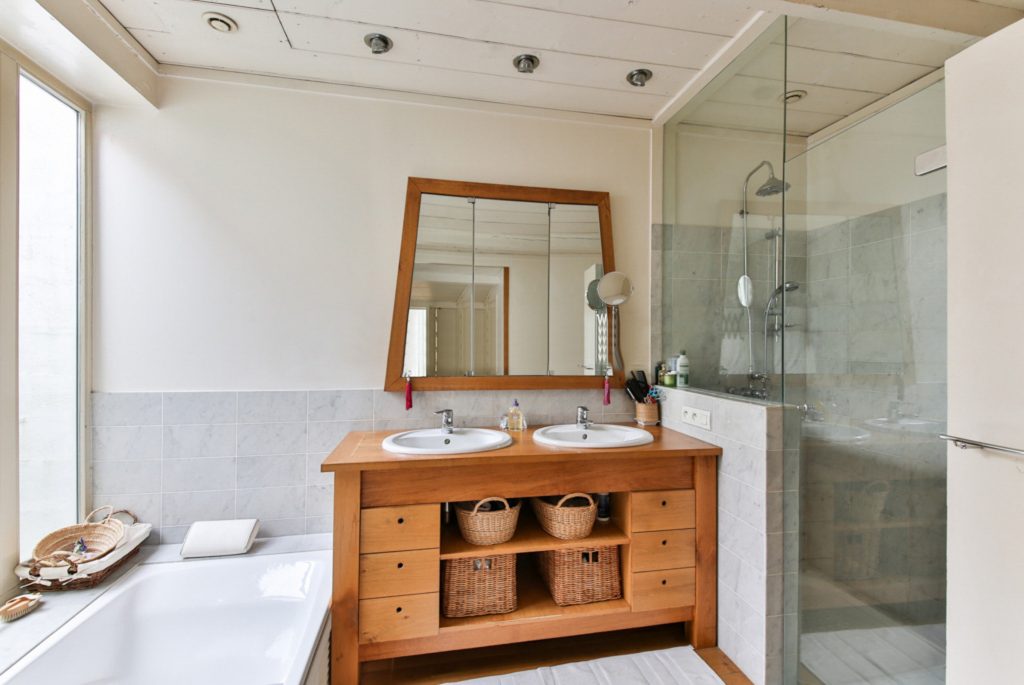
The material of your kitchen sinks important for both function and style. Here are your options for the most popular kitchen sink materials:
✅Stainless steel
A kitchen sink is one of the essential fixtures in a home, and stainless steel sinks are a popular choice for many homeowners. Stainless steel sinks are durable, easy to clean and resist stains and scratches. In addition, they come in a variety of styles and designs to suit any kitchen décor. However, stainless steel sinks can also be noisy and may show water spots or fingerprints.
✅Cast Iron
Cast iron kitchen sinks are popular for many homeowners due to their durability and stylish appearance. It is made from a single piece of cast iron; these sinks are incredibly sturdy and can withstand years of heavy use. In addition, cast iron sinks are available in a wide variety of colors and finishes, making it easy to find one that matches your kitchen décor. While cast iron sinks are typically more expensive than other sink materials, many homeowners feel they are worth the investment.
✅Fireclay
These sinks are made from a type of clay that is fired at high temperatures, making them extremely durable. In addition, fireclay is non-porous and resistant to staining, making it an ideal material for kitchen sinks. Although they are available in various colors and styles, fireclay sinks are most commonly seen in white or cream. This classic look can help to brighten up any kitchen. However, fireclay sinks are not just about looks. They are also incredibly easy to maintain. Regular cleaning will last for many years to come with a fireclay sink.
The main disadvantage of fireclay sinks is that they are one of the more expensive options on the market. However, many homeowners feel that the durability and easy maintenance of fireclay sinks make them worth the investment.
✅Copper
Copper sinks have been gaining popularity recently, and it’s easy to see why. Copper is a beautiful material that can add a touch of luxury to any kitchen. It’s also extremely durable, making it a great choice for busy families. In addition, copper is naturally antimicrobial, so it’s perfect for homes where hygiene is a priority. Plus, copper sinks are easy to care for and keep looking new. If you’re considering adding a copper sink to your kitchen, choose a high-quality option from a trusted manufacturer. However, keep in mind that copper sinks can be expensive and require more maintenance than some other kitchen sink types.
✅Composite
Composite kitchen sinks offer many advantages over traditional stainless steel sinks. Composite sinks are made from various materials, including granite, quartz, and recycled glass. It gives them a much broader range of colors and designs than stainless steel sinks. In addition, composite sinks are non-porous, making them highly resistant to staining and bacterial growth.
Composite sinks are also heat resistant, meaning that hot pots and pans can be placed directly in the sink without fear of damage. These sinks are typically much easier to clean than their stainless steel counterparts. For all these reasons, composite kitchen sinks are an increasingly popular choice for homeowners looking for a stylish and practical sink option.
However, composite sinks are not without their disadvantages. One of the biggest drawbacks is that they can be quite expensive. In addition, composite sinks are heavier than most other kitchen sink types, so they may require special installation hardware.
✅Natural Stone
There are many different kitchens sinks on the market today, but natural stone sinks are truly unique. It is made from materials like granite, marble, and soapstone; these sinks add an elegant touch to any kitchen. Unlike synthetic materials like acrylic or fiberglass, natural stone is highly durable and resistant to scratches and stains. In addition, each sink is unique, with its distinctive color and pattern.
While natural stone sinks are beautiful, they do require some special care. Stone is a porous material that can absorb stains and bacteria if it’s not properly sealed. In addition, natural stone sinks are heavy and may require reinforcements during installation. For these reasons, many homeowners hire a professional to install their natural stone sink.
Essential Kitchen Sinks Accessories to Consider

When choosing a kitchen sink, it’s important to consider more than just the material and style. You’ll need to purchase a few essential accessories to install and use your sink properly.
🔴Sink Grids
A sink grid is a kitchen tool that can be very useful for protecting your sink from scratches and everyday wear and tear. They are usually made of stainless steel or another sturdy material and fit snugly into your sink’s bottom. Most sink grids also have raised feet that help to keep them in place and prevent them from sliding around. In addition, they provide a level surface for washing dishes and other items, making it easier to avoid scratches and chips. Whether you are looking to protect your investment or simply make your sink more user-friendly, a sink grid is a worthwhile addition to any kitchen.
🔴Garbage Disposals
Most people know garbage disposal is a handy device for removing food waste in the kitchen sink. However, there are still many misconceptions about how these devices work. Garbage disposal does not grind food waste like a garbage truck; instead, it uses spinning blades to chop the waste into small pieces that can be easily washed away. This process not only helps to keep your kitchen sink clean but also prevents clogs in your plumbing. In addition, garbage disposals are typically much cheaper and easier to install than other food waste disposal systems.
🔴Disposal Flanges
A sink flange is a circular piece that sits on top of the sink’s drain hole. The flange seals the sink to the countertop and keeps sewer gases and other odors from coming up through the drain. A disposal flange is a specialized type of sink flange that is designed for use with garbage disposal. Disposal flanges typically have a raised lip that helps to keep food scraps from falling into the drain and clogging the disposal. In addition, most disposal flanges have a built-in stopper that can be used to seal off the drain when the disposal is not in use. If you are installing a new garbage disposal in your kitchen, be sure to choose a model that is compatible with your existing sink flange.
🔴Strainer Baskets
When it comes to kitchen sinks, strainer baskets are an essential accessory. Not only do they help to catch food particles and other debris, but they also prevent clogs and backups. In addition, strainer baskets can extend the life of your pipes by keeping them clear of debris. There are a variety of strainer baskets to choose from, so it is important to select one that is the right size and style for your sink. Additionally, clean your strainer basket regularly to ensure maximum effectiveness. A strainer basket can help keep your kitchen sink clean and functioning properly for many years.
🔴Lotion and Soap Dispenser
A lotion and soap dispenser is a must-have for any kitchen sink. Not only does it help to keep your hands clean, but it also helps to prevent the spread of bacteria. Anyone with basic plumbing skills can easily install a lotion and soap dispenser. Simply drill a hole in the countertop and screw in the dispenser. Most dispensers come with two compartments, one for soap and one for lotion. You can choose to have both dispensed from the same nozzle or separate nozzles for each compartment. Some dispensers also have a built-in soap dish, which helps keep your countertop clean. Regardless of which type of dispenser you choose, you’ll be glad you have it when your hands are dirty.
🔴Air Gap Kit
Most kitchens have a sink with a faucet and garbage disposal. Some also have a dishwasher. All of these appliances are connected to the water supply to be used to wash dishes, food, and hands. However, because these appliances are connected to the water supply, they can also introduce contaminants into the water. To help prevent this, many homeowners install an air gap kit under their kitchen sink.
The kit includes a Y-shaped fitting between the appliances and the water supply line. The upper arm of the Y connects to the appliances, while the lower arm connects to the drain. It creates a physical barrier that prevents contaminated water from entering the clean water supply.
In addition to installation instructions, most kits also come with a template that helps ensure that the fitting is installed correctly. Installing an air gap kit is a quick and easy way to help keep your family safe from waterborne illness.
Frequently Asked Questions
What is the standard depth of kitchen sinks?
The standard depth of a kitchen sink is eight inches. However, this may vary depending on the size and style of the sink. For example, farmhouse sinks are often deeper than standard sinks, while bar sinks tend to be shallower. When choosing a sink, it is important to consider both the sink’s overall size and the bowl’s depth. This will ensure that the sink is large enough to accommodate your needs and that the bowl is deep enough to prevent water from splashing.
Are double kitchen sinks standard size?
Most kitchen sink manufacturers produce double sinks that are standard size, making it easy to find a replacement sink that will fit in your existing counter space. Standard sizes for double sinks are either 60 or 72 centimeters wide, with a depth of between 43 and 50 centimeters. However, measuring your own counter space is important before purchasing a new sink, as there may be slight variations in width and depth from one manufacturer to another.
In addition, some sinks may be designed for installation in a corner, which could also affect the overall dimensions. With so many options available, it is vital to take accurate measurements to ensure that you choose a sink that will fit perfectly in your kitchen.
What is the standard hole size for a kitchen faucet?
Most kitchen faucets have a standard hole size of about 1.375 inches. This measurement is the hole’s diameter in the countertop or sinks that the faucet base needs to fit into. Some faucets may have a slightly smaller or larger hole size, but 1.375 inches is the most common size. If you’re unsure of the hole size for your kitchen faucet, you can measure it yourself or consult the manufacturer’s specifications.
When shopping for a new kitchen faucet, select one with a compatible hole size. Otherwise, you may need to enlarge the hole in your countertop or sink, which could be difficult and time-consuming.
What is the current trend in kitchen sinks?
These days, many homeowners are opting for stainless steel sinks. Stainless steel is a robust material that can withstand a lot of abuse, making it ideal for busy kitchens. It is also very easy to keep clean, which is an important consideration for any kitchen sink. In addition, stainless steel sinks are available in a wide range of styles, from classic designs to more modern looks. As a result, it is easy to find a stainless steel sink that fits any kitchen style.
What size supply line is needed for a kitchen faucet?
When choosing a supply line for a kitchen faucet, it is important to consider the flow rate of the faucet. A typical kitchen faucet has a flow rate of about 2.2 gallons per minute (GPM). However, some high-flow models can have a flow rate as high as 2.5 GPM. The type of supply line you need will depend on the flow rate of your faucet. For example, if you have a high-flow faucet, you will need a 3/8-inch supply line.
You will likely need a 1/2-inch or 5/8-inch supply line if you have a standard kitchen faucet. In general, it is best to avoid caution and choose a supply line that is slightly larger than what you need. It will help to ensure that your faucet has adequate water pressure and does not experience any problems with reduced flow.
How far should a kitchen sink be from the edge of a counter?
The ideal kitchen sink size is at least 22 inches wide and 18 inches deep. However, the countertop space surrounding the sink should also be considered. For example, if you have a small countertop, you may want to choose a narrow sink to leave more space for preparing food. The distance between the sink’s edge and the countertop’s edge should be at least 10 inches. It will give you enough space to wash dishes without reaching over the counter’s edge. If your kitchen has a lot of traffic, you may want to leave even more space so people can move around easily. In general, it is best to err on the side of caution when choosing the dimensions of your kitchen sink.
Bottom Line
In most cases, no—kitchen sinks come in various shapes and sizes to fit different kitchens’ layouts and needs. Following the tips in this guide, you can easily find a kitchen sink that suits your functional and aesthetic needs. With so many options available, there is no reason to settle for anything less than the perfect kitchen sink for your home!

